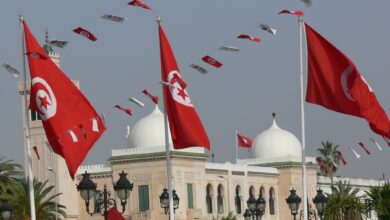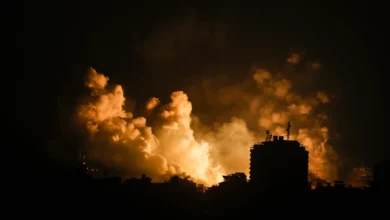Nearly 100 irregular migrants believed to be Egyptian nationals have arrived in Sicily in two boats in the past three days, the International Organization of Migration reported on Tuesday. Among the immigrants, 36 minors were registered by the authorities.
The new arrivals have raised questions about the relationship between migration and post-revolution unrest in Egypt. The incident recalls the sudden outflow of Tunisian migrants that followed the toppling of former President Zein al-Abidin Ben Ali last month.
Since 7 February, over 5000 Tunisians have reached the Italian coast of Lampedusa Island. On 12 February, the Italian government declared a humanitarian emergency and called on the European Union for support, requesting 100 million Euros to staunch the influx of migration from North Africa.
Tunisia is currently undergoing a transition towards democracy, following one month of widespread popular demonstrations against unemployment, inflation, corruption and oppression.
According to Italian news agency ANSA, Italian Interior Minister Roberto Maroni, after criticizing the EU for its ineffectiveness in stopping the flow of migrants from Tunisia, proposed sending police to Tunisia’s seaports to slow the departure of immigrants.
Tunisian authorities, for their part, promised to cooperate to curb migration, but strenuously rejected any interference in Tunisia’s internal affairs.
In an interview on Italian television, Maroni likened the current situation to a “biblical exodus” of Tunisians attempting to flee “an institutional earthquake, in a country without government or security.” Maroni expressed his concern that a similar scenario could play out in Egypt and Algeria in the near-term future.
“The Tunisians who landed in Lampedusa are mainly young people expelled in the year and half leading up to the revolution, who took advantage of the current situation to enter the country again,” said Gabriele Del Grande, founder of Fortress Europe, a website that documents migration flows. “Some others might be prisoners that escaped during the tumult. In general, however, the flow of migration is likely to diminish in a short time.”
For Katia Scannavini, professor of social sciences at Rome’s Sapienza University and expert in migration issues, the Tunisian example–and most likely the Egyptian one–falls within the context of ongoing economic migration from North Africa to Europe.
“While Maroni declared that the Tunisians were mostly refugees, with some possible infiltrations by terrorists, interviews conducted by humanitarian groups have shown that they are classical examples of so-called economic migrants,” says Scannavini. “They are men in their forties that did not leave the country to save their lives, as refugees do, but rather to look for jobs and better lives for themselves and their families.”
Scannavini told Al-Masry Al-Youm that, far from being political refugees, the migrants were mostly men who had already planned to leave the country with a “migration project,” by which they were allowed to work for a period before returning home.
Both revolutions, in Tunisia and in Egypt, were supported mainly by young people. While, in the past, many of them had aspired to leave their country, however, now many are returning home to their native land to support the respective uprisings. “Therefore, the flow of migrants is likely to be a normal and temporary consequence of the revolutions,” Del Grande, who covered both revolutions in January and February, said.
Some analysts believe that the scope of Tunisian migration following its revolution might spill over to Egypt and create a similar scenario.
“While Tunisia and Egypt are certainly different, if the current situation in Tunisia is generating an influx of irregular migrants, then it is likely that a similar situation in Egypt will have a similar effect, as protracted economic and political crises often force individuals and families to make this difficult and life-threatening choice,” said Agnes Czajka, assistant professor at the Center for Migration and Refugee Studies at the American University in Cairo.
However, Czajka adds: “There’s a long history of irregular migration from and through Tunisia, as well as Egypt, Algeria and Libya.” This history, she said, is expected to continue because of lingering political, economic and environmental issues.
The increase in Egyptian migration to Italy, however, preceded the 25 January revolution. Scannavini recalls that migration from Egypt had already registered an increase before the events that led to the toppling of President Hosni Mubarak, noting that the higher number of underage people coming from Egypt was a noteworthy difference from the migration flow emanating from Tunisia.
According to a 2010 statistical dossier published by Caritas, Europe registers the highest number of immigrants, at about 71.8 million. Southern Italy has always attracted migration flows from Africa, even if illegal arrivals to the southern coasts of Italy decreased by about 90 percent after April 2009, following the closure of the port of Lampedusa Island and an agreement between Italy and Libya.




